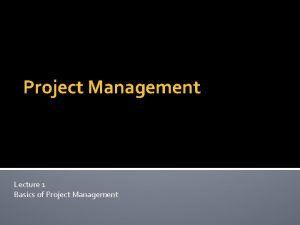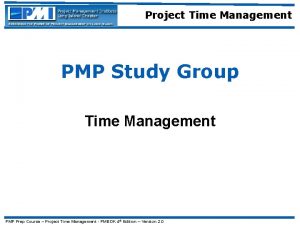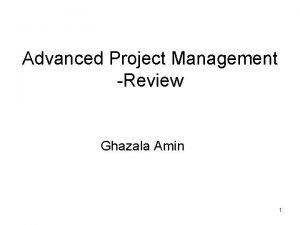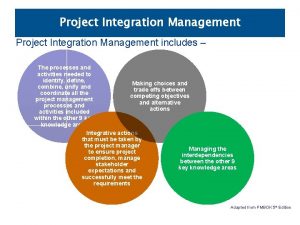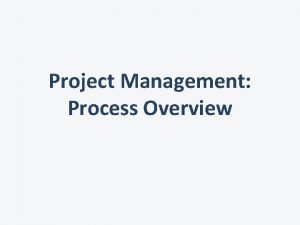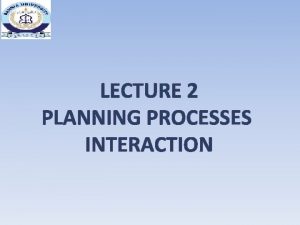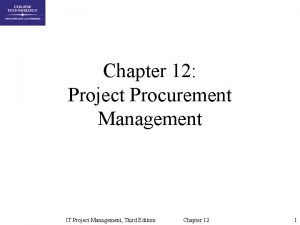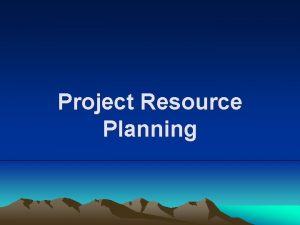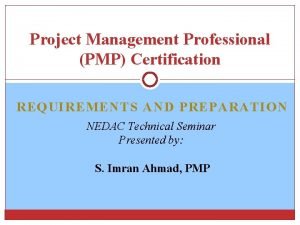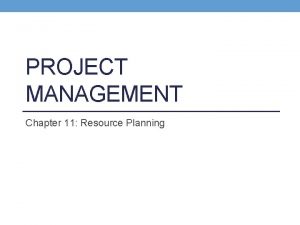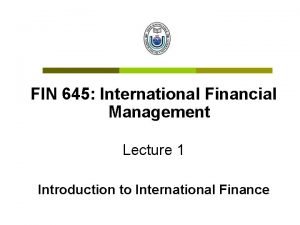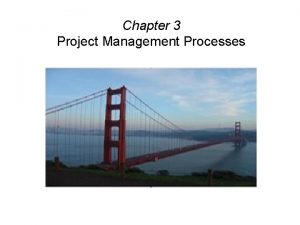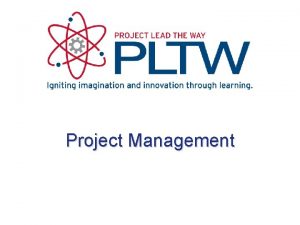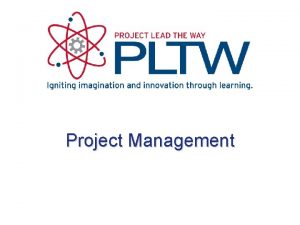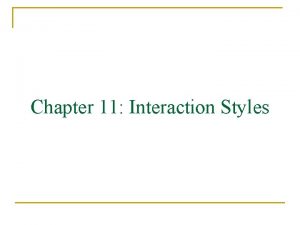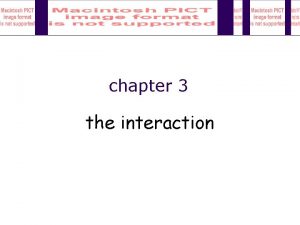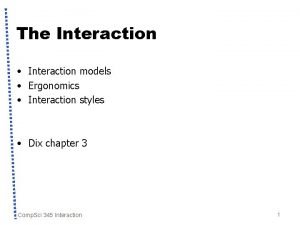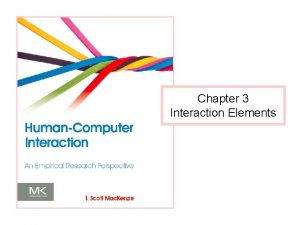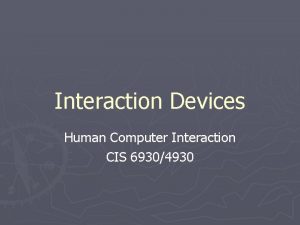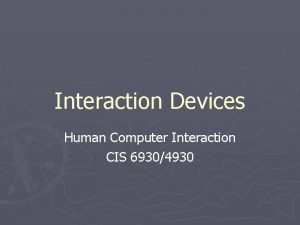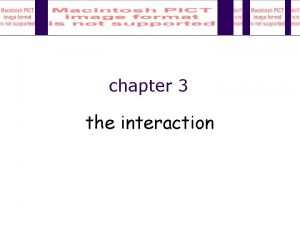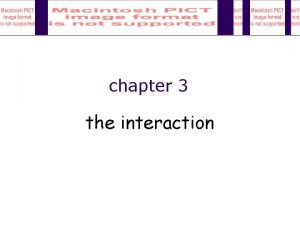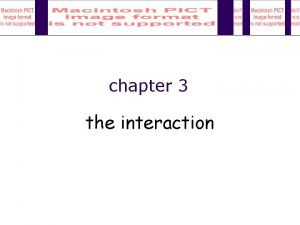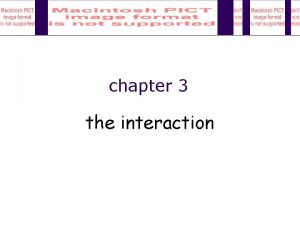LECTURE 2 PLANNING PROCESSES INTERACTION PROJECT MANAGEMENT PROCESSES









































- Slides: 41

LECTURE 2 PLANNING PROCESSES INTERACTION

PROJECT MANAGEMENT PROCESSES § § § § § Common Project Management Process Interactions Project Management Process Groups Initiating Process Group Planning Process Group Executing Process Group Monitoring and Controlling Process Group Closing Process Group Project Information Role of the Knowledge Area

INTEGRATIVE UNDERTAKINGS § Project Management is an integrative undertaking that requires each project and product process to be appropriately aligned and connected with the other processes to facilitate coordination. § Actions taken during one process typically affect that process and other related processes. § Actively manages these interactions to meet sponsor, customer, and other stakeholder requirements. § Sometimes, a process or a set of processes will need to be iterated several times in order to achieve the required outcome.

PROCESS INTERACTIONS • The project management processes overlap and interact in ways that are not completely detailed in this document. • Most experienced project management practitioners recognize there is more than one way to manage a project. • The required Process Groups and their processes are guides for applying appropriate project management knowledge and skills during the project. • The application of the project management processes is iterative, and many processes are repeated during the project.

PROCESS GROUP • The integrative nature of project management requires the Monitoring and Controlling Process Group to interact with the other Process Groups. • Monitoring and Controlling Process occur at the same time as processes contained within other Process Groups. • Monitoring and Controlling Process is pictured as a “background” Process Group for the other four Process Groups.

CHARACTERISTICS • Project management Process Groups are linked by the outputs which are produced. • The Process Groups are seldom either discrete or one-time events. • They are overlapping activities that occur throughout the project. • The output of one process generally becomes an input to another process or is a deliverable of the project, subproject or project phase. • Deliverables at the subproject or project level may be called incremental deliverables.

CHARACTERISTICS • The Planning Process Group provides the Executing Process Group with the project management plan and the project documents. • Process Groups interact and shows the level of overlap at various times. • If the project is divided into phases, the Process Group interact within each phase.

AN EXAMPLE • An example


Mapping the Process Groups to the Knowledge Areas • You can map the main activities of each PM process group into the nine knowledge areas by using the PMBOK® Guide 2004. • Note that there activities from each knowledge area under the planning process group. • All initiating activities are part of the project integration management knowledge area. Infomation Technology Project Management, Fourth Edition 10



Project Process Groups • Ensure that the project scope is clearly defined and approved • Verify that project is staffed appropriately • Establish leadership and project structure • Define roles and responsibilities • Develop project org chart and contact list • Communicate with project team, Functional Managers and other Stakeholders • Develop project communication plan • Develop other plans (quality, change, acceptance) • Identify high level risks and cross functional impacts • With your team, develop estimates and build a project plan • Ensure that the project plan is realistic and approved § Use the project plan to manage the project § Conduct regular status meetings § Create and distribute regular status reports § Track planned vs actual and update project plan § Keep the project plan current § Track and escalate issues and risks § Quality assurance § Track Lessons Learned Execute the Project Plan the Project 3 4 2 Determine the following: • Project objectives • Business need • High level project deliverables • High level constraints and assumptions • High level cross functional impacts • High level resource needs Control the Project • Ensure appropriate approvals of deliverables occur • Conduct performance review checkpoints (quality, time, budget, lessons learned) • Take required corrective action • Issue change requests • Make changes and adjust the baseline • Implement contingency plans 1 Initiate the Project 5 • • • Close the Project Distribute final status report Collect and compile lessons learned from team Facilitate a Post Project Review Meeting Ensure appropriate final acceptance approvals occur Finalize project documentation and file in project archives


Project Initiation • Initiating a project includes recognizing and starting a new project or project phase. • Some organizations use a pre-initiation phase, while others include items such as developing a business case as part of the initiation. • The main goal is to formally select and start off projects. • Key outputs include: – Assigning the project manager. – Identifying key stakeholders. – Completing a business case. – Completing a project charter and getting signatures on it. 15


Project Planning • The main purpose of project planning is to guide execution. • Every knowledge area includes planning information • Key outputs included : – A team contract. – A scope statement. – A work breakdown structure (WBS). – A project schedule, in the form of a Gantt chart with all dependencies and resources entered. – A list of prioritized risks (part of a risk register). 17


Project Executing • Project execution usually takes the most time and resources. • Project managers must use their leadership skills to handle the many challenges that occur during project execution. • Many project sponsors and customers focus on deliverables related to providing the products, services, or results desired from the project. 19

Project Monitoring and Controlling • Involves measuring progress toward project objectives, monitoring deviation from the plan, and taking corrective action to match progress with the plan. • Affects all other process groups and occurs during all phases of the project life cycle. • Outputs include performance reports, requested changes, and updates to various plans. 20

Project Closing • Involves gaining stakeholder and customer acceptance of the final products and services. • Even if projects are not completed, they should be formally closed in order to reflect on what can be learned to improve future projects. • Outputs include project archives and lessons learned, which are part of organizational process assets. • Most projects also include a final report and presentation to the sponsor or senior management. 21





PLANNING PROCESS GROUP § Planning Process Group consists of those processes performed to § establish the total scope of the effort, § define and refine the objectives, and § develop the course of action required to attain those objectives. § The planning processes develop the project management plan and the project documents that will be used to carry out the project. § The complex nature of project management may require the use of repeated feedback loops for additional analysis.













Reference: Figure 3 -4. PMBOK® Guide, 4 th Ed


Thank You
 Project planning and management lecture notes ppt
Project planning and management lecture notes ppt 01:640:244 lecture notes - lecture 15: plat, idah, farad
01:640:244 lecture notes - lecture 15: plat, idah, farad Project procurement management lecture notes
Project procurement management lecture notes Project management lecture notes
Project management lecture notes Project management lecture notes doc
Project management lecture notes doc Software cost estimation notes
Software cost estimation notes Project management lecture
Project management lecture Introduction for project
Introduction for project Time management pmbok
Time management pmbok Ghazala amin
Ghazala amin Example of project integration management
Example of project integration management Six processes of project integration management
Six processes of project integration management A process consists of
A process consists of Concurrent in os
Concurrent in os Project management process interactions
Project management process interactions Land use planning lecture notes
Land use planning lecture notes Land economics lecture notes
Land economics lecture notes Land use planning lecture notes
Land use planning lecture notes Erp in supply chain management ppt
Erp in supply chain management ppt Planning a software project
Planning a software project Solicitation planning example
Solicitation planning example Resource loading definition
Resource loading definition Project management planning
Project management planning What is a strategic plan
What is a strategic plan Resource planning definition in project management
Resource planning definition in project management The role of project management in achieving project success
The role of project management in achieving project success Walker royce software project management
Walker royce software project management Project cost-duration graph
Project cost-duration graph Introduction to project management kathy schwalbe
Introduction to project management kathy schwalbe What is strategic assessment in software project management
What is strategic assessment in software project management Types of project audit in project management
Types of project audit in project management Microsoft project agile project management
Microsoft project agile project management Varieties of project termination
Varieties of project termination Real time interaction management
Real time interaction management Customer interaction management
Customer interaction management Strategic management lecture
Strategic management lecture Financial management lecture
Financial management lecture Public sector accounting lecture notes in uganda
Public sector accounting lecture notes in uganda Om306
Om306 Performance management lecture
Performance management lecture Human resource management lecture chapter 1
Human resource management lecture chapter 1 Human resource management lecture chapter 1
Human resource management lecture chapter 1






